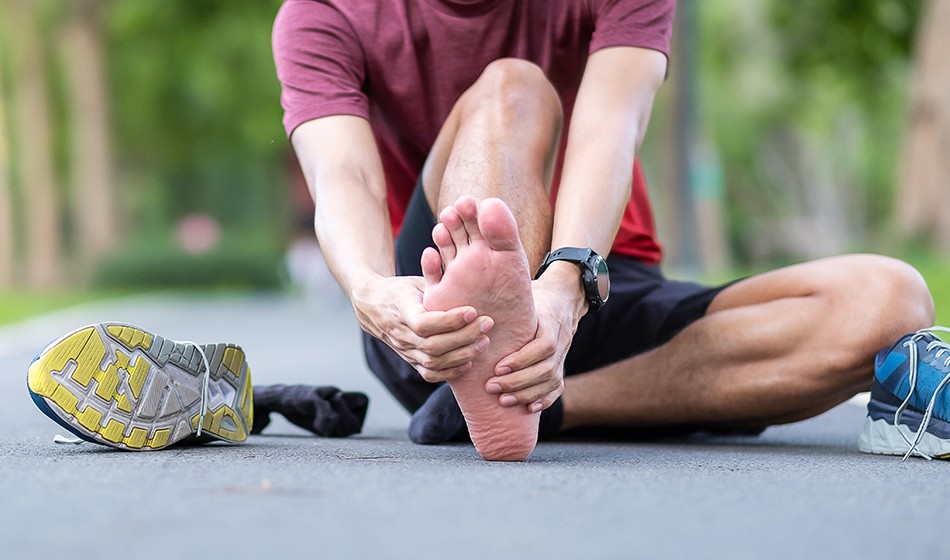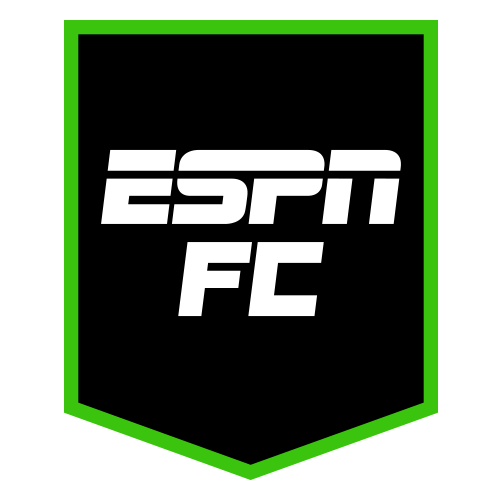
In the first of his regular columns, renowned physiotherapist and best-selling author Paul Hobrough takes a closer look at the foot condition plantar fasciitis
WHAT IS PLANTAR FASCIITIS?
The plantar fascia is a band of connective tissue that starts at the base of the calcaneus bone (heel bone) and extends forwards along the base of the foot. It divides into slips that attach to the short ligaments of the metatarsal heads (the long bones that meet the base of the toes). The plantar fascia helps support the long arch in the foot and also protects the foot.
WHAT DOES IT FEEL LIKE?
The most common way to discover plantar fasciitis – better known these days in medical circles as plantar fasciopathy – is when you first step out of bed in the morning and it feels like you have stood on a stone.
Once you have checked for gravel on your bedroom floor and not found any, start to consider this injury. The pain is most likely to be just as your medial longitudinal arch (the arch on the inside of your foot) leaves the heel bone.
If you feel the underside of your heel bone, run your finger just into the beginning of the arch on the medial side and press in. This is the start of the plantar fascia and the site of greatest pain.
WHAT HAPPENS?
When you first feel the pain, a few steps later it will have eased off completely. This is why I call it the ‘dark destroyer’, because in the early days of the injury you feel a sharp pain for just a few steps and then it goes away for the rest of the day.
You will most likely forget you even felt anything and even go for your run that day without any pain. However, the dark destroyer will return the next morning and the morning after that and so on.
Over time, it will take a few more steps for the pain to abate and you will start to feel it when you get up from your desk or the couch.
Within a fairly short time scale, the pain will occur several times a day and become worse the morning after those days on which you have run. If this continues, it will soon interrupt your running.
It is my experience that those people who take expert advice early on have fewer issues, get better more quickly and lose less overall time from their running programme.
There are also measures you can take, even without this issue ever having darkened your door, to stave it off or to provide some repair when the first danger signs appear.
PAUL’S 10-POINT PLAN FOR PLANTAR FASCIOPATHY
1 No barefoot walking
2 Write the alphabet with your foot in the morning/after a rest, before taking a step
3 Wear some off-the-shelf insoles to help maintain a good foot arch and offer some support
4 Gently stretch the gastrocnemius (upper part of your calf ) against a wall –not off a step – 6 x day 30-40 sec
5 Gently stretch the soleus muscle (lower part of your calf ) as per the gastrocnemius but with a bent knee
6 Wear a strassburg sock at night to bring the big toe into extension
7 Gentle gastrocnemius strengthening on alternate days 4 x 25 calf raises
8 Gently strengthen the soleus as per the gastrocnemius, but with a bent knee
9 Pull your big toe into extension when at rest (eg whilst watching the TV at night)
10 Aqua jog, cross train, strength train but do not run with pain
A GRADUAL RETURN TO RUNNING
The rule of thumb is not to run if you can press on the sore area and get pain greater than you would feel with the other foot (assuming only one side is affected). You can return to running, with caution, after this milestone has been reached.
The recommended return to running would be 5 x 3 minutes with gentle stretching between sets. Do not try to run extra slowly but choose a happy, steady pace instead.
Use the following system to decide if you can complete each session and when to increase your intervals:
You need the pain to be under a 4 out of 10 on the visual analogue pain scale (0 = no pain, 10 = the most pain you can imagine). Whatever the pain level is when you start, however, this cannot rise or you must stop. If the pain isn’t getting any worse then you can continue.
If you can manage to complete all five of the three-minute runs then wait a full day before trying again. Assuming you manage again then, on the third run, you would increase the time from three minutes to four minutes. If this is fine for the next two runs (still a day apart) then you would increase to 5 x 5 minutes.
However, if you do not manage to complete the 5 x 3 minutes, then wait two days and try again. Keep this process going until you have managed to complete 5 x 3 minutes then start to climb through the rehab running programme as per the process above.
Once you have completed five sets of the 5 x 5 on alternate days you can start to increase your running time, reducing the rests until you are once again continuously running again and pain-free.
Then – and only then – can you return to sessions. Consider not using spikes for the first few times you return to the track.
Plantar fasciitis can be an injury that lingers for years if not treated correctly. Whilst the above process sounds like it takes a long time, it is well worth the effort as the short cut will undoubtedly result in a prolonged period of no running.
SHOCKWAVE THERAPY
There is a well-researched treatment option that I ensure all my patients with this, or similar injuries, are offered.
Shockwave therapy is a healing accelerator which has an 82% success rate* when it comes to plantar fasciopathy. This involves having six weeks of targeted shockwave to the plantar fascia, generating a pressure wave and acoustic wave at the same time to increase microscopic circulation, stimulate the stem cell activity and help rejuvenate the soft tissues that make up the structure.
Some studies demonstrate a 40% faster return to play when shockwave therapy is used compared to standard treatment protocols alone.
*requires ‘Focused shockwave therapy’, not necessarily Radial Pressure Wave (RPW) which is commonly referred to as radial shockwave therapy. RPW can still be effective but does not have supporting evidence for 82% success rates.
ASK THE PHYSIO
Each month we will be asking for readers’ questions to ask Paul for his expert answers and treatment advice. If you have an injury problem you need solved or any sort of physio query, please send your questions via our social media channels, using the hashtag #AWaskthephysio















 Phone: (800) 737. 6040
Phone: (800) 737. 6040 Fax: (800) 825 5558
Fax: (800) 825 5558 Website:
Website:  Email:
Email: 






